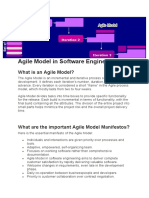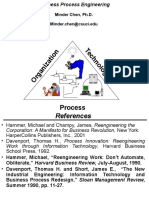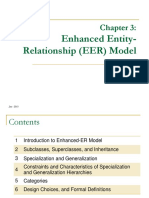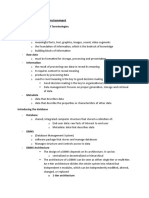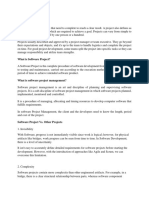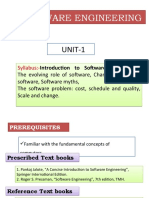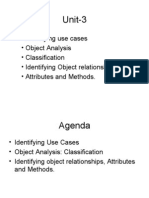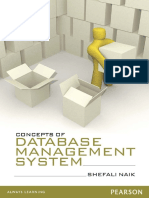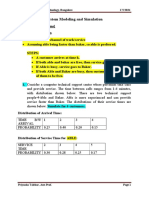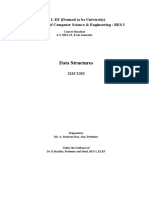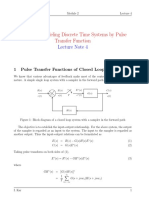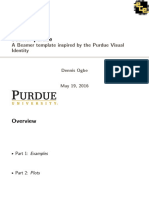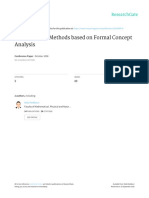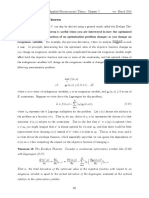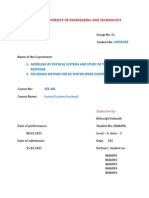ISO 9001:2015 Certified Institute
JAVA INSTITUTE FOR ADVANCED TECHNOLOGY
DATABASE MANAGEMENT 1
H7DX 04
H7DX 04/AS/01
RESEARCH ON DATABASE FUNDAMENTALS
1|Page
� What is a Database
A database is a collection of data that is stored in an organized way
to find, delete and add data at any time you want inefficiently. In the
past, manual databases stored data from written books but normally use
computerized databases to store data because it is more efficient and
less space is needed to store all the data. Those databases are called
Database Management Systems (DBMS). Database Management
Systems are system software that enables users to efficiently create or
manage large numbers of data in structural and controlled methods. The
primary goal of Database Management Systems is to provide a Reliable,
Secure, and user-friendly environment for users.
There are a lot of databases managed through the DBMS as an
examples
MySQL, SQL Server, MongoDB, Oracle Database. Database
Management Systems contain a lot of key components (Data Definition
Language, Data Manipulation Language, Data Query Language, Backup and
Recovery).
1.1 Evolution of Database Management Systems
The Evaluation of Database Management Systems has been changed
under several categories. Mainly through the development of technology
and data requirements. Examples of major stages in evaluation
databases:
File Systems (Pre-1960s):
Hierarchical and Network Databases (1960s-1970s):
Relational Databases (1970s-1980s):
Object-Oriented Databases (1980s-1990s):
Distributed Databases and Cloud Databases (2010s-Present):
NoSQL Databases (2000s-Present):
2|Page
� History of Databases
File Systems (Pre-1960s): -
In the past days of computing the data was stored
in punched cards. Every line contains a new record and they are separated
by commas, whitespaces, or tabs. They cannot contain multiple tables also.
Hierarchical and Network Databases (1960s-1970s): -
Hierarchical Databases are examples of more
organized databases because of this they became very complex to
use and this database uses parent-child relationships (one to many).
3|Page
� Network Databases are invented by Charles Bachmann.
They are allowing more complex relationships between data (many to
many relationships). However, both of these systems are very difficult to
use.
Relational Databases (1970s-1980s): -
After the introduction of hierarchical and network
databases, Relational Databases were introduced by Edgar F. Codd. This
model provides a very simpler and more flexible way to manage data by
organizing them into tables with rows and columns because of all these
things this step became a very significant milestone in the Database
Management System.
Object-Oriented Databases (1980s-1990s): -
Time applications became more complex and because of
this need to control different types of data types, at this time Object-
Oriented Databases were Introduced. These databases can handle
different types of data types and also these databases can handle data
more efficiently over multiple servers but because of complexity these
databases did not become successful.
Distributed Databases and Cloud Databases (2010s-Present): -
In the present rise of cloud computing, cloud databases
were introduced because these databases everything became more
accessible because of the large scale of space, availability and efficient
use of resources. They Distributed data through multiple servers or data
centres.
4|Page
� Figure 1
NoSQL Databases (2000s-present): -
Need handle to a large amount of unstructured data and
the rise of web applications introduced the NoSQL (Not Only SQL)
Databases emerged. The Advantages of this database can be named as
scalability, flexibility and performance. This database included document
databases, key-value stores, Column-family stores, Multi-Model
Databases and graph databases. Examples of all kinds of these databases
are MongoDB, Couch DB, CouchBase, Cassandra, HBase, Redis, Riak, and
Neo4J the famous NoSQL database examples.
5|Page
�1.2 Advantages and Disadvantages of the Database
Management Systems Approach vs. File-Based Systems
Approach
Advantages of Database Management Systems (DBMS):
Security of Data- Database Management Systems provide
access control mechanisms and authorization to ensure the
security of the database and prevent unauthorized access.
Scalability- The way of getting increased data and users of
the database, DBMS also getting scaled horizontally or
vertically.
Reduced Data Redundancy- Database Management
Systems Perform normalization, optimizing Storage and
reducing the chances of inconsistencies to reduce the data
redundancy.
Data Sharing and Integration- DBMS are allowing to access
the database to multiple users at the same time and
manipulates the same data. While eliminating data
redundancy.
Disadvantages of Database Management Systems (DBMS):
Complexity- Deploying a Database Management System and
Maintaining is a complex thing and also it requires some kind
of skill and knowledge about that.
Cost- For the owners of small businesses getting knowledge
about DBMS and Setting up a DBMS may be very Expensive.
Failures- One single point of failure in the database can be
caused for disrupted access to all the data in a database.
Advantages of File-Based Systems:
Simplicity- File-Based Systems are very simple to execute and
easily match small businesses and not expensive.
6|Page
� Familiarity- File-Based Systems are easy to manage and
understand the data because many users are very familiar with
working on files.
Control- These Systems are easy to control and manage data
directly and any kind of special skills or knowledge is not
required.
Disadvantages of File-Based Systems:
Data Redundancy- Each Application made its copy of data
because of this data redundancy occurs.
Data Isolation- Data on File-Based Systems are Isolated when
you wanted to share or integrate data across different databases
or applications you have to face a lot of difficulties.
Lack Of Security- File-Based Systems do not contain any kind of
security mechanisms to control authorizations and prevent
unauthorized access.
2. job roles related to Database Management Systems
Data Administrator (DA)
Data Administrator is the person who processes all the data
into the convenient data model. This is a high-level responsible job
role. He is responsible for managing all the data resources in an
organization. This role is also known as the data analyst.
Responsibilities of this Role
Filters out relevant data
Monitor the data flow throughout the
organization
Designs a concept-based data model
Analyze and break down the data to be understood
by the non-tech person
7|Page
� Developing and implementing data policies and
standards that ensure the accuracy, completeness,
and consistency of data across the organization.
Planning and implementing data architecture,
which includes defining the data models, data
integration, and data flow across different systems.
Database Administrator (DBA)
The database administrator is the person who maintains and
creates updates for the database. This is a comprehensive Job
because a lot of duties for this role for example (hiring someone
to create a database, maintain it, have backups and optimize the
database for high performance). This role is also known as
Database Coordinator or Database Programmer.
Responsibilities of this Role
Create and design a database
Analyze and monitor database requirements
Ensures data security
Creating, managing, and maintaining the organization’s
databases, including security, access, and data integrity.
Monitoring database performance, ensuring uptime,
and implementing disaster recovery procedures.
8|Page
� Database Designer
A database designer is a guy who designs, develops,
executes and preserves the organization's data management
system.
Responsibilities of this Role
Understand the organization’s data to skillfully
carry out the company's database design projects
Install and configure the relational database
management system on the company's server
Design database schemas and create databases for
varied projects of the company
Handle the creation of new users, define roles and
privileges and grant access to them
Assist application development teams to easily
connect to the databases
Track the performance of the databases and fix
issues quickly to facilitate smooth functioning
Application Developer
Application Developer is a highly responsible job role.
Designing, Building, Testing and Maintaining all these things in this
job role. This role is very helpful in the software development
lifecycle.
Responsibilities of this Role
Identifying the requirement
Designing
Coding
Development
Testing
Debugging and Troubleshooting
9|Page
� Deployment
Maintenance
End User
End users are those who finally use the database for their work
such as querying, updating and generating reports. The database
finally exists for use. There are several kinds of End users
Ex:-
Casual End users
Naive or Parametric End Users
Application Programmers
Sophisticated End Users
Standalone Users
Specialized Users
Conclusion
Therefore, We can see the collection of data organized in a
structured method to update delete or edit easily called a database. The
evolution of these databases has been happed with time because of this file-
based databases have been changed to database management systems
(computerized databases). There are advantages and disadvantages also in
both of these databases. There are a lot of important job roles in this field
for example data administrator, database manager, application developer
and database designer.
References
10 | P a g e
�Jyothi (2021b) The evolution of Database Management system. Available at:
https://track2training.com/2021/07/26/the-evolution-of-database-
management-system/.
Kiruthikaarunkumar (2020) NoSQL databases. Available at:
https://track2training.com/2020/07/07/nosql-databases/.
GeeksforGeeks (2023) “Difference between Data Administrator DA and Database
Administrator DBA,” GeeksforGeeks [Preprint]. Available at:
https://www.geeksforgeeks.org/difference-between-data-administrator-da-
and-database-administrator-dba/#:~:text=Data%20administrator%20is%20a
%20person,role%20with%20some%20technical%20knowledge.
Mathenge, J. (no date) Database Administrator (DBA) Roles & Responsibilities in
The Big Data Age. Available at: https://www.bmc.com/blogs/dba-database-
administrator/.
GeeksforGeeks (2023a) “Categories of end users in DBMS,” GeeksforGeeks
[Preprint]. Available at: https://www.geeksforgeeks.org/categories-of-end-
users-in-dbms/#:~:text=End%20users%20are%20basically%20those,%2C
%20updating%2C%20and%20generating%20reports.
Indeed Editorial Team (2023) “What Is A Database Designer? (Responsibilities And
Salary),” Indeed.com India [Preprint]. Available at:
https://in.indeed.com/career-advice/finding-a-job/what-is-database-designer .
11 | P a g e




